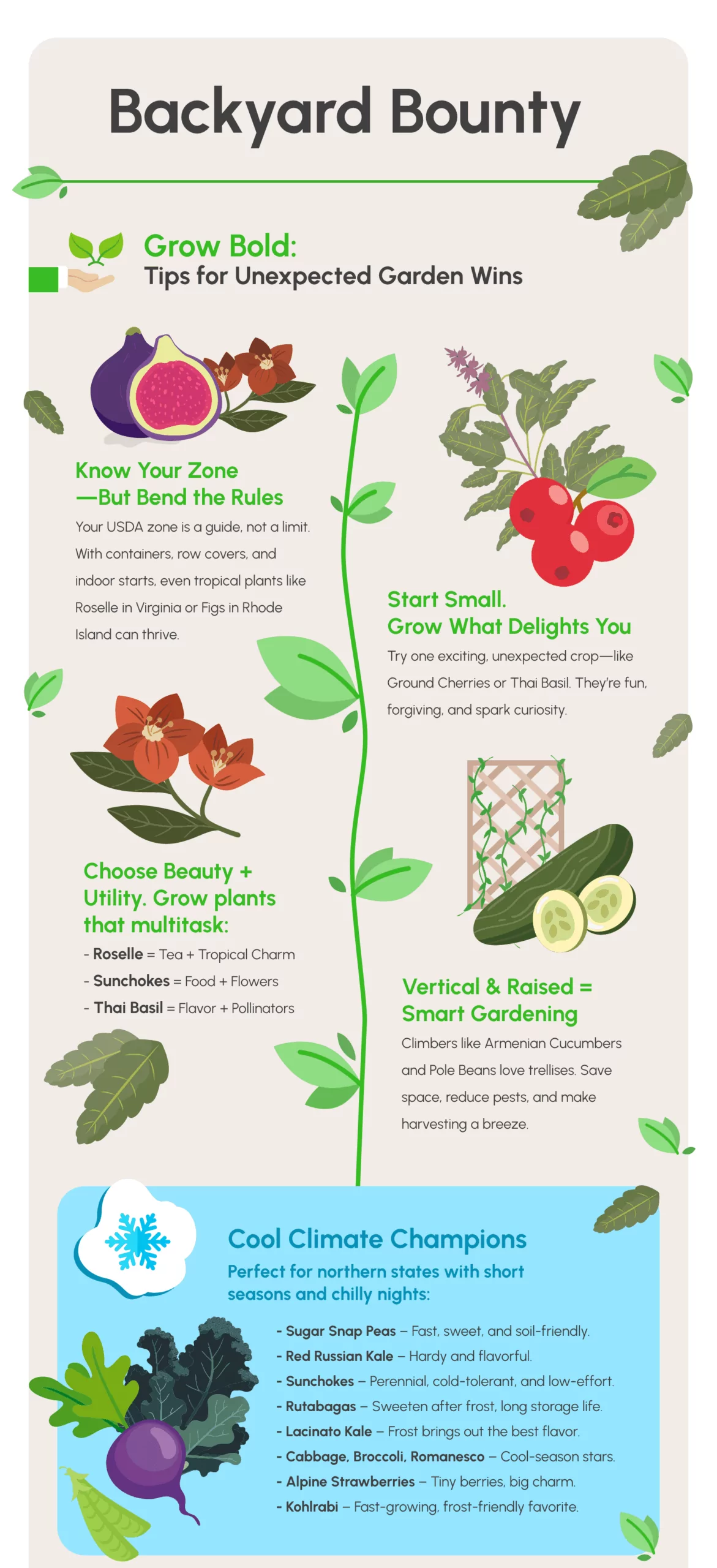With tariffs set to drive up the cost of fruits and vegetables, Americans may find a solution right in their own yards.
Many assume their local weather restricts what they can grow, but what we’ve uncovered is a wealth of produce that can flourish just steps from the kitchen.
As you’ll see below, nearly every state boasts fruits and vegetables that thrive with little effort—no expert gardening know-how needed.
Think vibrant hibiscus in Alabama’s heat or tart gooseberries foraged in Wyoming’s wilds. Growing your own could be a clever way to dodge climbing grocery costs.
Even better, these homegrown crops are more than just budget-friendly. They’re stunning, tough, and often pack more nutrients than what you’d find on supermarket shelves.


Key Findings
Heat lovers rule the South – but it’s not just peppers and okra.
Sure, classic Southern staples like okra, peanuts, and sweet potatoes show up again and again.
But it is fun to see tropical crops like roselle (hibiscus) and Malabar spinach quietly taking over backyard garden, too.
These aren’t just heat-tolerant – they absolutely thrive in humidity and sun, giving gardeners a way to beat the heat while still harvesting something spectacular.
“Bankable” crops in the cold North.
In places with brutal winters and short summers – think Minnesota, Vermont, and the Dakotas- it’s all about plants that guarantee a payoff.
Fast growers like snap peas, kale, and root veggies (rutabagas, carrots, turnips) can dominate. Crops that can shrug off a cold snap or store through the winter aren’t just practical – they’re essential.
Ground cherries are America’s secret favorite.
One of the biggest surprises? How often ground cherries can thrive across completely different states – from Iowa to Maine to South Dakota.
They’re adaptable, low-maintenance, and weirdly tropical-tasting, like a pineapple and a tomato mix. Not bad for a plant most people have never even heard of.
Dry climates grow flavor by necessity.
In desert states like Arizona, Nevada, and New Mexico, gardeners can lean heavily on ancient, drought-adapted crops – Armenian cucumbers, tepary beans, prickly pear cactus.
These aren’t just water-wise choices; they often taste better precisely because they have to struggle a little.
Concentrated sugars, richer flavors – it’s like survival makes everything sweeter.
The “beauty bonus” is real.
Over and over, plants that offer both food and beauty are suggested. Rainbow chard, borage, amaranth, lemon cucumbers – they aren’t just useful; they turn gardens into something worth showing off.
Turns out, growing your own food isn’t just about survival anymore. It’s about joy too.
Heritage crops tell deeper stories.
In state after state, crops with historical and cultural roots – Seminole pumpkins in Florida, tepary beans in Arizona, taro in Hawaii – make our list.
People can plant fruits and vegetables, which connect to the land.. It’s gardening with memory.
Final Thoughts
If there’s a common thread running through our list, it is this:
The best gardens aren’t about forcing things to fit – they’re about knowing what works, what matters, and what makes you smile when you step outside.
Where the sun bakes the ground, find plants that thrive in heat. Where the frost creeps in early, pick crops that grow fast and survive the chill. Where water is scarce, plants grow flavor with every drop.